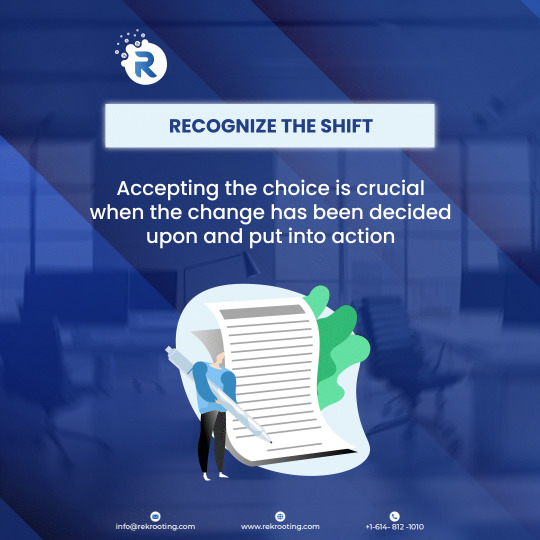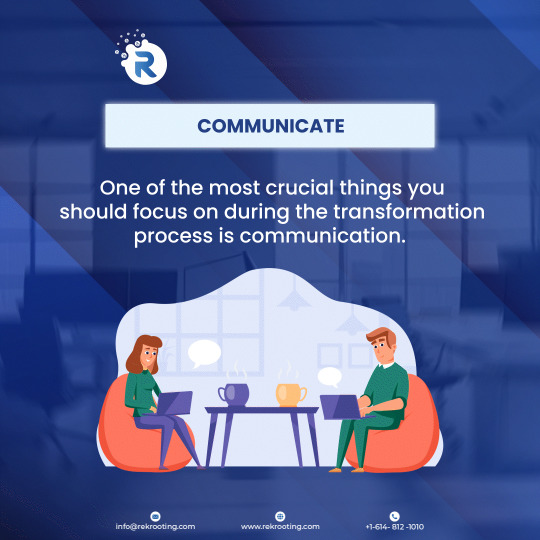#Changemanagement
Explore tagged Tumblr posts
Text

Management Consulting Services in USA: Driving Business Excellence with Time eSolutions In today’s fast-paced and competitive business environment, companies across the USA are constantly seeking ways to optimize operations, improve efficiency, and achieve sustainable growth. This is where management consulting services come into play. At in Time eSolutions, we specialize in providing tailored consulting solutions that empower businesses to overcome challenges, seize opportunities, and thrive in their respective industries.
#ManagementConsulting#BusinessConsulting#ConsultingServices#BusinessGrowth#StrategicPlanning#OperationalEfficiency#TimeeSolutions#USABusiness#BusinessTransformation#Leadership#BusinessStrategy#CorporateConsulting#BusinessExcellence#ChangeManagement#PerformanceImprovement#BusinessSuccess#ManagementSolutions#BusinessOptimization#IndustryExperts#DataDrivenDecisions
2 notes
·
View notes
Text





Even though a lot of us like to change jobs and often talk with our colleagues about how things should be done differently. When these changes eventually take place, we usually feel scared and uneasy. We occasionally might have to accept adjustments that have an impact on our team, our immediate supervisor, our priorities at work, or even our job. Read the blog to know more about workplace change. You can find the link of the blog in the comments section below. Please feel free to share your feedback and questions. We would love to hear from you.
#workplacechanges#changemanagement#adaptingtochange#changeisgood#staffingsolutions#staffing#recruiting#recruitment#hiring#job
5 notes
·
View notes
Text
The Fate of Those Who Can't Adapt to Change
People who struggle to adapt to change often face a variety of negative consequences. These can manifest in both their personal and professional lives, leading to stagnation and dissatisfaction.
Professional Stagnation In the professional realm, an inability to adapt can result in stagnation. As industries evolve and new technologies emerge, those who resist change may find themselves left behind. They may miss out on opportunities for advancement, skill development, and potentially face job loss as their roles become obsolete.
Social Isolation On a personal level, resistance to change can lead to social isolation. As societal norms and social circles shift, those who cling to old ways may struggle to maintain relationships. This can result in feelings of loneliness and alienation.
Mental and Emotional Stress The constant battle against change can also lead to significant mental and emotional stress. The fear of the unknown and the discomfort with uncertainty can cause anxiety, depression, and a general decline in mental well-being.
Missed Opportunities People who can't adapt to change often miss out on opportunities for personal growth and new experiences. They may remain stuck in unfulfilling situations, unable to take advantage of new paths that could lead to happiness and success.
Decreased Resilience Over time, an inability to adapt can decrease a person's resilience. They may become increasingly fragile in the face of adversity, struggling to cope with even minor changes or challenges.
Conclusion Overall, the fate of those who can't adapt to change is often marked by professional stagnation, social isolation, mental and emotional stress, missed opportunities, and decreased resilience. Embracing change and developing adaptability are crucial for personal and professional growth and well-being.
#Adaptability#ChangeManagement#PersonalGrowth#ProfessionalDevelopment#MentalHealth#Resilience#LifeSkills#OvercomingChallenges#EmbraceChange#SelfImprovement
2 notes
·
View notes
Text
Health Promotion and Disease Prevention
Health Promotion and Disease Prevention
Introduction Health promotion and disease prevention are critical components of public health strategies aimed at improving the health and well-being of individuals and communities at the 15th American Healthcare, Hospital management, Nursing, And Patient Safety Summit Here's an overview of these concepts: Health Promotion:
1. Health promotion involves empowering individuals and communities to take control of their health and make positive lifestyle choices.
2 . It focuses on promoting behaviors and conditions that contribute to good health, such as regular physical activity, healthy eating, stress management, and avoiding tobacco and excessive alcohol consumption.
3 . Health promotion activities often include health education, community outreach, and the creation of supportive environments that facilitate healthy choices.
4 . The goal of health promotion is to enhance well-being, prevent diseases, and improve quality of life.
Disease Prevention:
1 . Disease prevention involves efforts to reduce the incidence, prevalence, and impact of diseases and health conditions.
2 . Prevention strategies may target different stages of the disease process, including primary prevention (preventing the onset of disease), secondary prevention (detecting and treating diseases in their early stages), and tertiary prevention (managing and reducing the complications of existing diseases).
3 . Prevention efforts may include vaccination programs, screening initiatives, health behavior interventions, and environmental modifications to reduce exposure to risk factors.
4 . Disease prevention aims to reduce the burden of illness, decrease healthcare costs, and improve overall population health outcomes.
We cordially invite you to attend the "15th American Healthcare, Hospital management, Nursing, And Patient Safety Summit; (15AHNPSUCG2025)," which will be conducted from May 14-16 as a hybrid event in San Francisco, United States & Virtual.
15th American Healthcare, Hospital management, Nursing, And Patient Safety Summit: This blog focuses specifically on health promotion practice, offering insights, best practices, and case studies from professionals working in the field of health promotion and disease prevention.
Important Information:
Conference Name: 15th American Healthcare, Hospital Management, Nursing, And Patient Safety Summit Short Name: #15AHNPSUCG2025 Dates: May 14-16,2025 Venue: San Francisco, United States & Virtual Email: [email protected] Visit: https://health.universeconferences.com/ Call for Papers: https://health.universeconferences.com/call-for-paper/Register here: https://health.universeconferences.com/registration/Call/WhatsApp Us: +442033222718
#AmericanHealthcareconference2025 #Hospitalmanagementsummit #healthcare #health #primaryhealth #nursing #patientsafety #healthcaremanagement #patientcare #occupationalhealth #healthsystem #pharmaceutical #clinicaltrials #diabetes #changemanagement #mentalhealth #familyplanning #ACP #Infectionprevention #telehealth #oralhealth #Healthcareconference
#AmericanHealthcareconference2025#Hospitalmanagementsummit#healthcare#health#primaryhealth#nursing#patientsafety#healthcaremanagement#patientcare#occupationalhealth#healthsystem#pharmaceutical#clinicaltrials#diabetes#changemanagement#mentalhealth#familyplanning#ACP#Infectionprevention#telehealth#oralhealth#Healthcareconference
2 notes
·
View notes
Text
How To Turn Self-Improvement Knowledge Into Lasting Change

Introduction
Self-improvement and happiness are goals many of us aspire to achieve. We read books, attend seminars, and soak up advice from experts, hoping to find the secret formula for a better life.
However, the real challenge lies in translating this knowledge into tangible, lasting changes in our daily lives. In this blog post, we will explore actionable steps to bridge the gap between learning and real, sustained results in your quest for self-improvement and happiness.
Part I: Setting Clear Goals
Define Your Objectives: Begin by identifying specific self-improvement goals and the happiness you seek. What areas of your life do you want to enhance, and what does happiness mean to you personally?
Create SMART Goals: Make your goals Specific, Measurable, Achievable, Relevant, and Time-bound. For example, instead of saying, “I want to be happier,” specify, “I will practice daily gratitude for 10 minutes each morning for the next 30 days.”
Part II: Cultivating Self-Awareness
Reflect Regularly: Allocate time for self-reflection and journaling. Record your thoughts, emotions, and experiences to gain insight into your behavior and feelings.
Identify Barriers: Recognize the obstacles that prevent you from putting self-improvement knowledge into practice. These may include time constraints, procrastination, or fear of change.
Part III: Creating Sustainable Habits
Start Small: Rather than attempting a complete life overhaul, focus on one or two specific self-improvement habits. For example, begin with a morning routine or a daily meditation practice.
Consistency is Key: Commit to your chosen habits consistently. Research suggests that it takes around 66 days to form a new habit, so be patient and persistent.
Accountability: Share your goals with a friend or family member who can hold you accountable. Alternatively, use habit-tracking apps or journals to monitor your progress.
Part IV: Managing Your Environment
Eliminate Distractions: Identify common distractions that hinder your self-improvement efforts. Minimize or eliminate these distractions from your environment.
Surround Yourself Positively: Spend time with individuals who support your goals and foster a positive atmosphere. Distance yourself from negativity and toxic influences.
Part V: Seeking Guidance and Feedback
Learn Continuously: Stay updated with the latest research and literature in self-improvement and happiness. Attend workshops, listen to podcasts, or read books to refine your knowledge.
Mentorship and Coaching: Consider seeking guidance from a mentor or coach who can provide personalized advice and hold you accountable for your progress.
Feedback Loop: Be open to feedback from others, as it can offer valuable insights into areas where you may need improvement.
Part VI: Resilience and Adaptability
Embrace Setbacks: Understand that setbacks are a natural part of the journey. Instead of dwelling on failures, view them as opportunities to learn and grow.
Adapt and Adjust: Be flexible in your approach. If a particular self-improvement strategy isn’t working, don’t be afraid to adjust your plan or try a different method.
Part VII: Celebrating Success
Acknowledge Achievements: Celebrate your milestones and achievements along the way. Recognizing your progress can boost motivation and reinforce positive behaviors.
Express Gratitude: Practice gratitude regularly, acknowledging the positive aspects of your journey. This can foster a sense of contentment and happiness.
Conclusion
Transforming self-improvement knowledge into real, sustained results requires dedication, self-awareness, and ongoing effort. By setting clear goals, cultivating self-awareness, forming sustainable habits, managing your environment, seeking guidance, and demonstrating resilience, you can bridge the gap between knowledge and action.
Remember that the journey to self-improvement and happiness is ongoing, and each small step you take brings you closer to your goals. Stay committed, adapt as needed, and savor the joy of your personal growth and well-being.
Check out the Happiness 2.0 Podcast — https://podcast.edwardgdunn.com/
Happiness 2.0 Blog — https://edwardgdunn.com/blog
2 notes
·
View notes
Text
Mastering Self-Talk: Unlock Leadership Success Today
Mastering Self-Talk: Unlock Leadership Success Today https://www.youtube.com/watch?v=geRGClp4gXE Transform your inner dialogue to become a more effective leader. In this video, we explore the importance of positive self-talk for personal growth and leadership excellence, helping you reshape your mindset for success. #SelfTalk #LeadershipDevelopment #PositiveMindset #GrowthMindset #LeadershipSuccess #PersonalDevelopment #MindsetMatters #InnerDialogue #SuccessStrategies #EmotionalIntelligence via Indispensable Consulting https://www.youtube.com/channel/UCQbdbGMaFxQlkuD8wOYUv-A April 07, 2025 at 06:40PM
#indispensableconsulting#personalgrowth#companyculture#changemanagement#leadershipcoaching#leadershipdevelopment#managementconsulting#keynotespeaker
0 notes
Photo

Claruna’s Human-Centered Digital Transformation
#BärbelWetenkamp#ChangeManagement#Claruna#digitaltransformation#EmployeeEngagement#EthanEvans#human-centereddigitaltransformation#LeadershipDevelopment#SwissQuality
0 notes
Text
What Megan’s Story Reveals About Artificial Intelligence (AI)
Before we scrolled through feeds or shopped from our couches, the internet felt like an intimidating experiment. In the early ’90s, it was new, strange, and—to many—unnecessary. But those who were willing to explore the unknown helped shape the modern world. Today, Artificial Intelligence can feel just as uncertain. What if we learned from our past, and viewed AI not as a threat, but as the next…
#AIAdoption#AIResistance#ArtificialIntelligence#ChangeManagement#DigitalTransformation#EmbraceChange#FromThenToNow#FutureOfWork#HistoryRepeats#LeadTheChange#MarketingInnovation#TechEvolution#TechWithPurpose#WomenInTech#WorkplaceInnovation#AI#AI Adoption#AI in marketing#AI Readiness#AI transformation#anticipating change resistance#change management#change resistance#change strategy#change tools#digital disruption#digital workplace#embracing AI#Future of Work#history of technology
0 notes
Text
Project implementation is a critical phase in project management where plans turn into reality. This stage involves executing the strategies, deploying resources, and ensuring that objectives are met efficiently. Without a proper implementation plan, even the best project ideas can fail.
In this blog, we will explore what project implementation is, how to implement a project successfully, the role of an implementation project manager, and the impact of organizational transformation implementation projects.
#ProjectManagement#Implementation#ProjectImplementation#Implementing#ProjectExecution#ImplementationProjectManager#BusinessSuccess#OrganizationalTransformation#StrategyExecution#Implemented#Leadership#ChangeManagement#ProcessImprovement#TaskManagement#ProjectPlanning
0 notes
Text
Transfer Box Files to OneDrive & Focus on Change Management
0 notes
Text
Leading Change Effectively: Key Skills for Managers
I found a great Change Management course for leaders and managers that teaches you how to lead through change successfully. It covers everything from communication strategies to handling resistance and using an 8-stage model to manage transitions smoothly.
Why it matters:
Learn to lead change confidently.
Develop communication strategies that engage teams.
Master the tools to handle the human side of change.
Check out the course here: Change Management for Leaders & Managers
How do you manage change in your workplace? Let’s chat! #ChangeManagement #Leadership #ManagementSkills #LeadingChange #CommunicationStrategies #TeamEngagement #ResistanceToChange #WorkplaceChange #LeadershipDevelopment #ChangeLeadership #EmployeeEngagement #OrganizationalChange #ChangeManagementCourse #ManagerTraining #ProfessionalDevelopment #BusinessLeadership
#ChangeManagement#Leadership#ManagementSkills#LeadingChange#CommunicationStrategies#TeamEngagement#ResistanceToChange#WorkplaceChange#LeadershipDevelopment#ChangeLeadership#EmployeeEngagement#OrganizationalChange#ChangeManagementCourse#ManagerTraining#ProfessionalDevelopment#BusinessLeadership
0 notes
Text

Meet Our Day 1 Speakers at the 15th World Healthcare Conference! We’re excited to highlight the incredible experts speaking on Day 1 of the 15th World Healthcare, Hospital Management, Nursing, and Patient Safety Conference, happening May 14-16, 2025, in San Francisco, USA. Join us for these transformative sessions to gain valuable insights into healthcare, patient safety, and nursing advancements! 2 Speaker Slots Available – Secure Yours Today! Stand among these experts and present your work at this global platform. Apply now! Early bird registration deadline: March 31st, 2025 Register as a Speaker: https://nursing.utilitarianconferences.com/registration #nursingucg #MeetOurSpeakers #Day1Highlights #SpeakerSlotsOpen #HealthcareConference2025 #Nursing #Hospitalmanagement #Changemanagement #Pediatricnursing #Healthcare #Preventivecare #Patientsafety #Nursinghome #Technologynursingscience #Legalethicshealthcare #Changemanagement
#nursingucg#MeetOurSpeakers#Day1Highlights#SpeakerSlotsOpen#HealthcareConference2025#Nursing#Hospitalmanagement#Changemanagement#Pediatricnursing#Healthcare#Preventivecare#Patientsafety#Nursinghome#Technologynursingscience#Legalethicshealthcare
0 notes
Text

SUBMIT YOUR ABSTRACT Track 8: Change Management, Track 9: Health Information You're invited to the CE/CME/CPD accredited 15th American Healthcare Summit, happening May 14-16, 2025, in San Francisco! Share your innovative research and solutions on cybersecurity in healthcare and patient safety. Submission deadline: April 15th, 2025 Submit your abstract here: https://healthcare.utilitarianconferences.com/submit-abstract
#Healthcare#ChangeManagement#Leadership#Innovation#Strategy#DigitalHealth#Transformation#HealthTech#EHR#DataSecurity#Interoperability#HealthIT#PatientCare#QualityImprovement#Analytics
0 notes
Text
The Cost of Silence
Have you ever participated as a member of a team, gathered in a room, brainstorming for an important business strategy. There’s a lot of silence. Ideas are thrown out, but no one really feels strongly about them. Yet, when it’s time to make a decision, the group agrees on something that no one actually wants. Everyone assumes the others are on board with it, and no one speaks up to voice their…
#AbileneParadox#Accountability#BusinessStrategy#ChangeManagement#Collaboration#Communication#ConflictResolution#Consensus#CorporateCulture#CourageToDisagree#CriticalThinking#DecisionMaking#Denmark#Efficiency#EmployeeEngagement#Groupthink#Innovation#Leadership#management#NordicLeadership#OrganizationalBehavior#PainPointAnalysis#Psychology#RiskManagement#SilentConsensus#StrategyExecution#Teamwork#Transparency#WorkplaceCulture#WorkplaceDynamics
0 notes
Text
In today's rapidly evolving business landscape, Strategic HR Planning has become a linchpin for organizational success. This comprehensive guide delves into the intricacies of aligning human resources with overall business objectives, emphasizing the imp...
0 notes
Photo

AI and CX Customer Agility Funding Support The AI and CX Customer Agility Framework has launched a funding event to support the delivery of the Beta Version of the Framework. All funds are going through Agile World Incorporated the 501(c)(3) public charity. #AgileWorldInc #AgileTransformation #AgileFinOps #LeanPortfolioManagement https://agile-world.us/ai-and-cx-customer-agility/?utm_source=tumblr&utm_medium=%23AgileWorld&utm_campaign=%23AgileWorld
#501c3#AgileWorld#BusinessCofounder#Champion#CHANGEMANAGEMENT#CustomerAgility#CustomerAgilityFramework#INNOVATION#PersonalCofounder#Supporter
0 notes